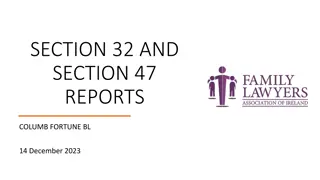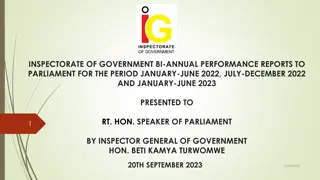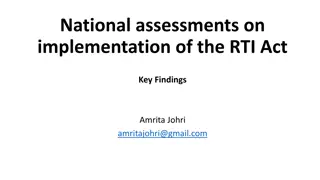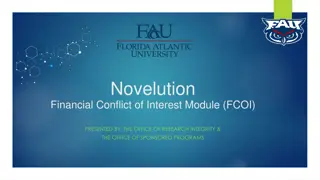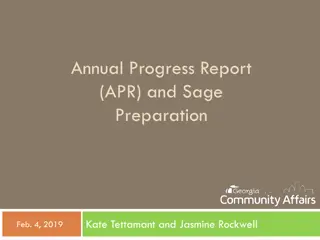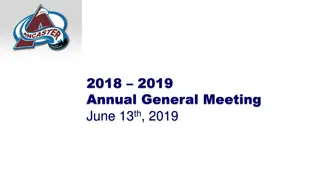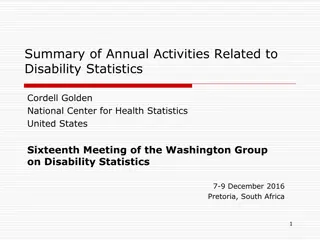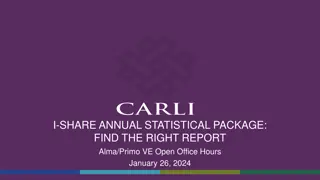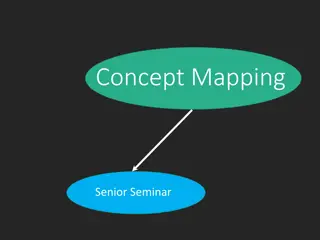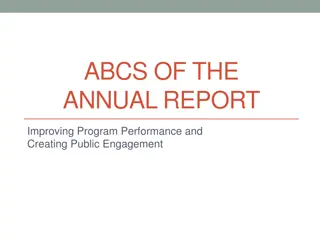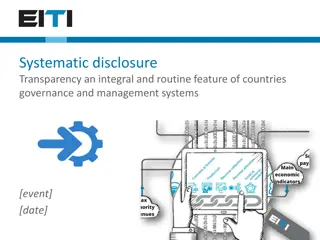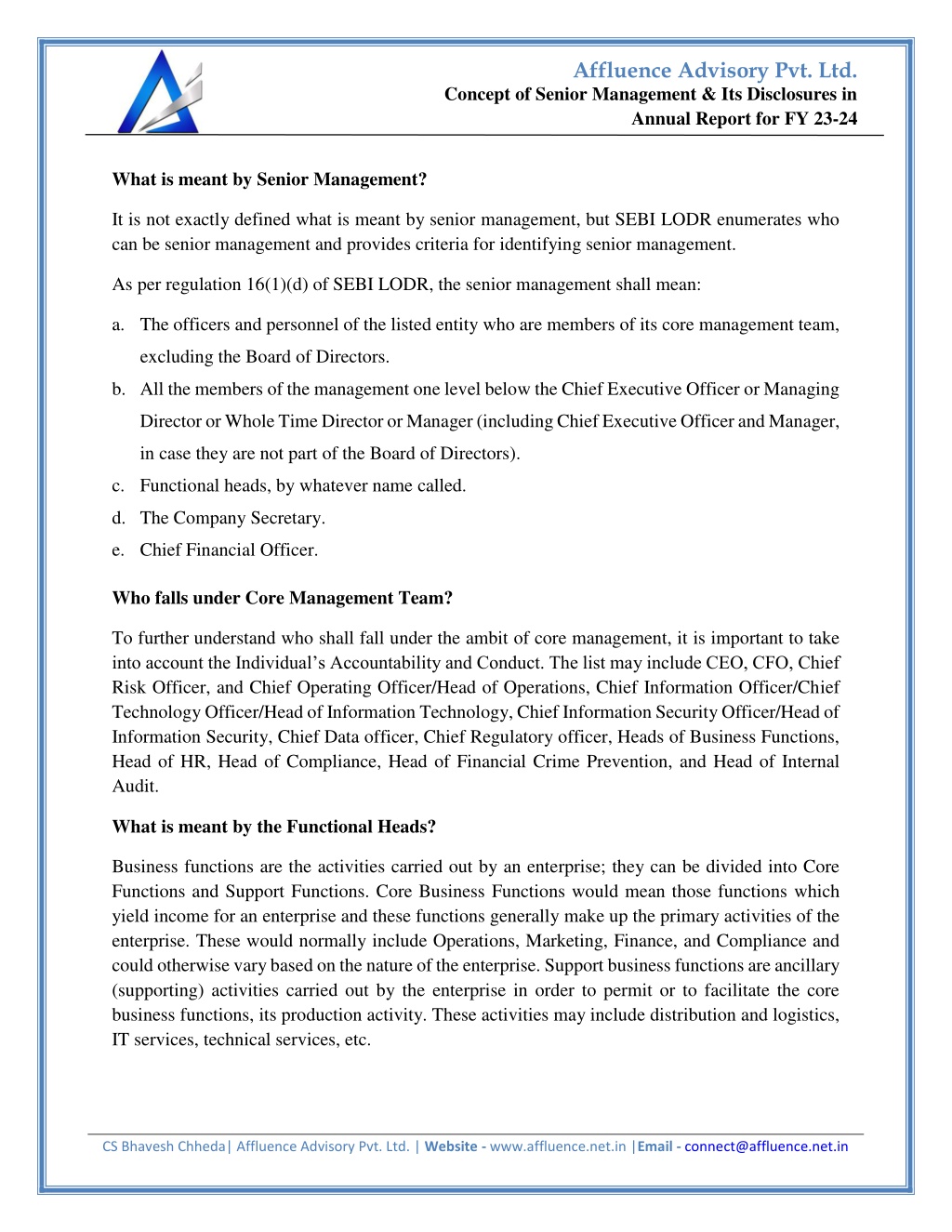
Concept of Senior Management & Its Disclosures in Annual Reports
The document outlines the definitions, roles, and disclosure requirements for senior management under SEBI LODR regulations in the annual report for FY 2023-24. Senior management includes core management team members below the CEO/MD, functional heads, CFO, and Company Secretary. Key updates include the inclusion of functional heads in the definition of senior management from January 17, 2023.
Download Presentation

Please find below an Image/Link to download the presentation.
The content on the website is provided AS IS for your information and personal use only. It may not be sold, licensed, or shared on other websites without obtaining consent from the author. Download presentation by click this link. If you encounter any issues during the download, it is possible that the publisher has removed the file from their server.
E N D
Presentation Transcript
Affluence Advisory Pvt. Ltd. Concept of Senior Management & Its Disclosures in Annual Report for FY 23-24 What is meant by Senior Management? It is not exactly defined what is meant by senior management, but SEBI LODR enumerates who can be senior management and provides criteria for identifying senior management. As per regulation 16(1)(d) of SEBI LODR, the senior management shall mean: a.The officers and personnel of the listed entity who are members of its core management team, excluding the Board of Directors. b.All the members of the management one level below the Chief Executive Officer or Managing Director or Whole Time Director or Manager (including Chief Executive Officer and Manager, in case they are not part of the Board of Directors). c.Functional heads, by whatever name called. d.The Company Secretary. e.Chief Financial Officer. Who falls under Core Management Team? To further understand who shall fall under the ambit of core management, it is important to take into account the Individual s Accountability and Conduct. The list may include CEO, CFO, Chief Risk Officer, and Chief Operating Officer/Head of Operations, Chief Information Officer/Chief Technology Officer/Head of Information Technology, Chief Information Security Officer/Head of Information Security, Chief Data officer, Chief Regulatory officer, Heads of Business Functions, Head of HR, Head of Compliance, Head of Financial Crime Prevention, and Head of Internal Audit. What is meant by the Functional Heads? Business functions are the activities carried out by an enterprise; they can be divided into Core Functions and Support Functions. Core Business Functions would mean those functions which yield income for an enterprise and these functions generally make up the primary activities of the enterprise. These would normally include Operations, Marketing, Finance, and Compliance and could otherwise vary based on the nature of the enterprise. Support business functions are ancillary (supporting) activities carried out by the enterprise in order to permit or to facilitate the core business functions, its production activity. These activities may include distribution and logistics, IT services, technical services, etc. CS Bhavesh Chheda| Affluence Advisory Pvt. Ltd. | Website - www.affluence.net.in |Email - connect@affluence.net.in
Affluence Advisory Pvt. Ltd. Concept of Senior Management & Its Disclosures in Annual Report for FY 23-24 The Companies Act 2013 and SEBI LODR Regulations 2015 do not define as to who will be treated as "Functional Heads". As per the general understanding, individuals who are responsible for managing specific functions or departments within an organization are known as functional heads. These individuals are typically in charge of a particular area of expertise or operational division and oversee the activities and performance of that specific function. However, in the context of defining SMPs, what shall be relevant are the heads of the Core Functional Departments of the company who report directly to the MD or WTD and the ancillary or supporting heads shall be disregarded while interpreting the definition of Senior Management. On the joint reading of the aforesaid discussion on core management as well as functional head, it becomes clear that senior persons from ancillary or support services may form part of the core management, however, the same need not be categorized under functional head for the purpose of these regulations. The objective behind specifically covering the Functional Heads within the regulatory ambit of senior management, is on account of their important role in key decision making. What are the recent changes in the definition of Senior Management? SEBI vide its amendment dated January 17, 2023, had inserted the position of functional heads under the definition of senior management. What is meant by functional heads is not defined by SEBI LODR. But it can be interpreted to mean individuals heading various functions / departments in the company. It can be exemplified that Functional Heads are experts in their respective fields and possess specialized knowledge and skills related to the function they oversee. They are responsible for setting strategic goals, formulating plans, and ensuring the effective execution of activities within their departments. For example, the head of the finance department would be responsible for managing financial planning, budgeting, and reporting activities. The head of the marketing department would oversee marketing strategies, campaigns, and brand management. Similarly, functional heads in areas like operations, human resources, legal, technology, and others have responsibilities aligned with their specific areas of expertise. Where and what are the disclosures required to be given pursuant to senior management as per SEBI (LODR) for FY 23-24? SEBI vide its SEBI LODR (Second amendment) dated July 15, 2023, requires listed companies to provide details of senior management in corporate governance report comprising part of annual report for FY 2023-24. CS Bhavesh Chheda| Affluence Advisory Pvt. Ltd. | Website - www.affluence.net.in |Email - connect@affluence.net.in
Affluence Advisory Pvt. Ltd. Concept of Senior Management & Its Disclosures in Annual Report for FY 23-24 SEBI LODR asks listed companies to provide particulars of senior management and changes in senior management since previous year. These details have to be provided for the entire financial year and not as on the end of financial year. Particulars of senior management means details of senior management viz. name and designation. Changes in senior management mean people who have newly joined the senior management, who have been promoted as senior management and details of persons who have resigned or retired from the position of senior management. There is no format prescribed for disclosure of particulars and changes in senior management. Hence companies are free to decide the format of disclosures of senior management Which companies are required to give this disclosure relating to senior management? Disclosure of senior management is required to be given pursuant to Schedule V, Part C, and Point 5B of SEBI LODR. This section is applicable to equity listed companies to whom corporate governance provisions of SEBI LODR are applicable and also by high value debt listed companies. Disclosures relating to senior management shall not be required to be given by following companies: a.Main board-listed companies to whom corporate governance provisions are not applicable b.SME listed companies What would be the ideal format for disclosure of details of senior management? Date of joining/resignation, if during FY 2023-24. Sl. No Name of the employee Position Function/department Anamolies It is being observed that companies who have made disclosures in their annual report for FY 23- 24 have not disclosed the details of senior management who have resigned or retired from the position of senior management during the financial year. E.g. if Ms A has joined the organization as Chief Technology officer then it needs to be mentioned as to who was the Chief Technology Officer earlier. Has he resigned or retired on superannuation shall also be disclosed. The wordings of the provisions of clause 5B are clear to state that details of change in senior management shall CS Bhavesh Chheda| Affluence Advisory Pvt. Ltd. | Website - www.affluence.net.in |Email - connect@affluence.net.in
Affluence Advisory Pvt. Ltd. Concept of Senior Management & Its Disclosures in Annual Report for FY 23-24 also be disclosed. So, change here means who was heading the position earlier and who would now be heading the position. Conclusion Senior Management is a crucial position in any organization. Looking at the definition above it makes it clear that it comprises of senior personnel within the organization. These senior personnel are crucial for running the business of the company. Constant change in these personnel highlights serious issues in the management of the company. Disclosure regarding change in senior management would give an impression about the governance aspect of the company. Disclaimer:This article provides general information existing at the time of preparation and we take no responsibility to update it with the subsequent changes in the law. The article is intended as a news update and Affluence Advisory neither assumes nor accepts any responsibility for any loss arising to any person acting or refraining from acting as a result of any material contained in this article. It is recommended that professional advice be taken based on specific facts and circumstances. This article does not substitute the need to refer to the original pronouncement CS Bhavesh Chheda| Affluence Advisory Pvt. Ltd. | Website - www.affluence.net.in |Email - connect@affluence.net.in


